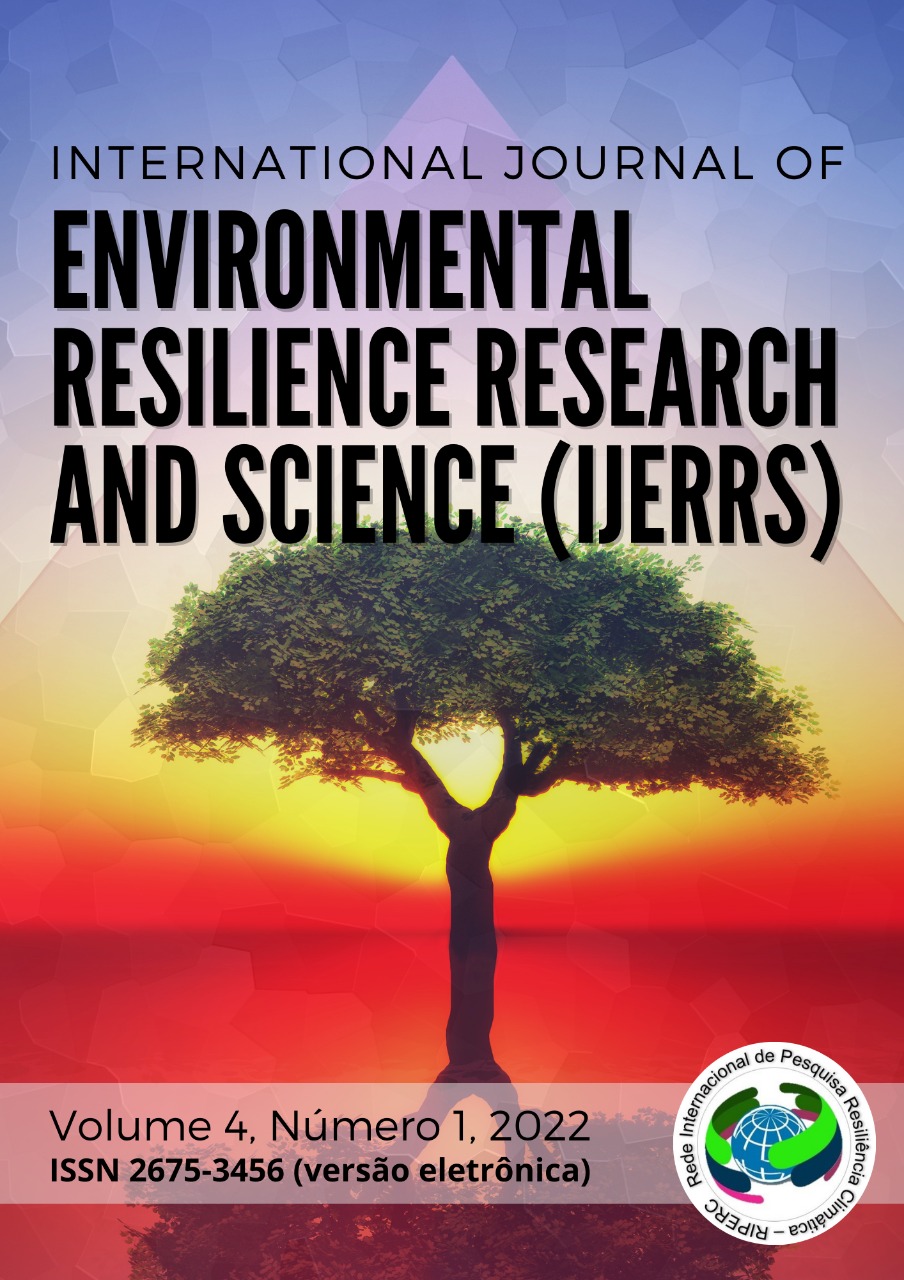TECHNICAL CHALLENGES, IMPACTS AND PERSPECTIVES FOR ELECTRIC VEHICLES (EVS)
DOI:
https://doi.org/10.48075/ijerrs.v4i1.27926Palavras-chave:
Electric Mobility, Electric Vehicles (EVs), Electric Charging.Resumo
Preventing environmental issues and growing concerns about global energy crises are driving the need for new opportunities and technologies that can meet significantly greater demand for cleaner generation and products, zero-carbon, and sustainable energy systems. This requires developing more efficient transport and energy generation. Changing the transport model to electric is a promising approach for ecological systems and for reducing the problems of climate change. This article inspects the current status, latest deployment, and challenging issues when installing an electric vehicle charging and infrastructure (EVs) system in conjunction with various international standards and charging codes. The article further analyzes the impacts of (EVs) and perspectives on society. A complete assessment of charging systems for (EVs) with battery charging techniques. Besides, the beneficial and harmful impacts of (EVs) are categorized and carefully reviewed. Corrective measures for harmful impacts are presented and the benefits obtained from them are highlighted. Bidirectional charging offers the vehicle's key feature for smart grid technology. In this article, the current challenging issues due to the massive deployment of (EVs) and future research trends are also presented.
Referências
Abdullah, H.M.; Kamel, R.M.; Tahir, A.; Sleit, A.; Gastli, A. The Simultaneous Impact of EV Charging and PV Inverter Reactive Power on the Hosting Distribution System’s Performance: A Case Study in Kuwait. Energies 2020, 13, 4409.
ABVE – ASSOCIAÇÃO BRASILEIRA DO VEÍCULO ELÉTRICO. O que é frenagem regenerativa? Disponível em: <http://www.abve.org.br/PF/ExibePF. asp?codigo=0009>. Acesso em: 22.6.2020.
Z. Darabi and M. Ferdowsi, ‘‘Aggregated impact of plug-in hybrid electric vehicles on electricity demand profile,’’ IEEE Trans. Sustain. Energy, vol. 2, no. 4, pp. 501–508, Oct. 2011.
K. Throngnumchai, T. Kai, and Y. Minagawa, ‘‘A study on receiver circuit topology of a cordless battery charger for electric vehicles,’’ in Proc. IEEE Energy Convers. Congr. Expo., Sep. 2011, pp. 843–850.
Jing W, Yan Y, Kim I, Sarvi M. Electric vehicles: A review of network modelling and future research needs. Advances in Mechanical Engineering. January 2016. doi:10.1177/1687814015627981
Ye K, Li P. A new adaptive PSO-PID control strategy of hybrid energy storage system for electric vehicles. Advances in Mechanical Engineering. September 2020. doi:10.1177/1687814020958574
C. Kong, R. Jovanovic, I. S. Bayram, and M. Devetsikiotis, ‘‘A hierarchical optimization model for a network of electric vehicle charging stations,’’ Energies, vol. 10, no. 5, p. 675, 2017 .
J. Kiviluoma and P. Meibom, ‘‘Methodology for modelling plug-in electric vehicles in the power system and cost estimates for a system with either smart or dumb electric vehicles,’’ Energy, vol. 36, no. 3, pp. 1758– 1767, 2011.
D. T. Hoang, P. Wang, D. Niyato, and E. Hossain, ‘‘Charging and discharging of plug-in electric vehicles (PEVs) in vehicle-to-grid (V2G) systems: A cyber insurance-based model,’’ IEEE Access, vol. 5, pp. 732–754, 2017, doi: 10.1109/ACCESS.2017.2649042.
Mohammad, A.; Zamora, R.; Lie, T.T. Integration of Electric Vehicles in the Distribution Network: A Review of PV Based Electric Vehicle Modelling. Energies 2020, 13, 4541
N. M. L. Tan, T. Abe, and H. Akagi, ‘‘Design and performance of a bidirectional isolated DC–DC converter for a battery energy storage system,’’ IEEE Trans. Power Electron., vol. 27, no. 3, pp. 1237–1248, Mar. 2012.
F. Un-Noor, S. Padmanaban, L. Mihet-Popa, M. N. Mollah, and E. Hossain, ‘‘A comprehensive study of key electric vehicle (EV) components, technologies, challenges, impacts, and future direction of development,’’ Energies, vol. 10, no. 8, p. 1217, 2017.
P. Braun. (Apr. 2015). Don’t Look so Smug: Your Tesla Might be Worse for the Environment Than a Gas Car. Digital Trends. Accessed: Jan. 9, 2018. [Online]. Available: https://www.digitaltrends. com/cars/hold-smugness-tesla-might-just-worse-environment-know/
R. Liu, L. Dow, and E. Liu, ‘‘A survey of PEV impacts on electric utilities,’’ in Proc. IEEE PES Innov. Smart Grid Technol. (ISGT), Jan. 2011, pp. 1–8.
Zhang, J.; Che, L.; Wang, L.; K. Madawala, U. Game-Theory Based V2G Coordination Strategy for Providing Ramping Flexibility in Power Systems. Energies 2020, 13, 5008.
Lee, H.-J.; Oh, B.-C.; Kim, S.-W.; Kim, S.-Y. V2G Strategy for Improvement of Distribution Network Reliability Considering Time Space Network of EVs. Energies 2020, 13, 4415
Downloads
Publicado
Como Citar
Edição
Seção
Licença
Copyright (c) 2022 International Journal of Environmental Resilience Research and Science

Este trabalho está licenciado sob uma licença Creative Commons Attribution-NonCommercial-ShareAlike 4.0 International License.
Aviso de Direito Autoral Creative Commons
Política para Periódicos de Acesso Livre
Autores que publicam nesta revista concordam com os seguintes termos:
1. Autores mantém os direitos autorais e concedem à revista o direito de primeira publicação, com o trabalho simultaneamente licenciado sob a Licença Creative Commons Attribution que permite o compartilhamento do trabalho com reconhecimento da autoria e publicação inicial nesta revista.2. Autores têm autorização para assumir contratos adicionais separadamente, para distribuição não-exclusiva da versão do trabalho publicada nesta revista (ex.: publicar em repositório institucional ou como capítulo de livro), com reconhecimento de autoria e publicação inicial nesta revista.
3. Autores têm permissão e são estimulados a publicar e distribuir seu trabalho online (ex.: em repositórios institucionais ou na sua página pessoal) a qualquer ponto antes ou durante o processo editorial, já que isso pode gerar alterações produtivas, bem como aumentar o impacto e a citação do trabalho publicado (Veja O Efeito do Acesso Livre).
Licença Creative Commons
Esta obra está licenciada com uma Licença Creative Commons Atribuição-NãoComercial-CompartilhaIgual 4.0 Internacional, o que permite compartilhar, copiar, distribuir, exibir, reproduzir, a totalidade ou partes desde que não tenha objetivo comercial e sejam citados os autores e a fonte.









